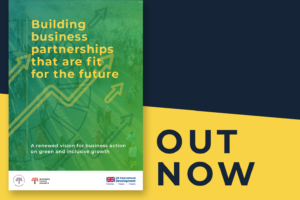The world is not on track to eliminate hunger by 2030. Despite the gains made between 2005 and 2015, we are now witnessing an alarming increase in hunger and undernourishment.
According to the latest estimates, 828 million people are facing hunger everyday – 150 million more than before the COVID-19 pandemic. Reversing this trend will require more funding in areas that make a difference.
Maximising impact
In 2020, an international research project with over 70 researchers partnered with Nature Research to publish a focused collection about effective agricultural interventions that can aid efforts to end hunger sustainably by 2030.
The project, known as Ceres2030, showed what was required to end hunger, double the incomes of 545 million small-scale farmers, and limit agricultural emissions in line with the Paris climate agreement.
Using machine learning and economic modeling to unlock data and capture the dynamic effects of policy interventions, it identified three key areas where funding can have the greatest impact.
Empower the excluded. Agricultural interventions work most effectively when people have a minimum level of income and education, as well as access to networks and resources.
On the farm. It is essential to grow the incomes and productivity of farmers while also helping them improve their resilience to droughts, floods, and other climate shocks and ensuring their access to the best climate-adapted technologies and practices.
Food on the move. Investment and improvements must focus on storage and services to help farmers transport their food to market
Investments must align with interventions that evidence shows to have real impact on ending hunger and achieving SDG 2 by 2030.
Boosting investment
Evidence from Ceres2030, the Center for Development Research (ZEF), and the Food and Agriculture Organization of the United Nations (FAO) agree that donors must spend an additional USD 14 billion per year to end hunger sustainably. This means that current public spending must be doubled.
This scale of resources is unlikely to materialize. Donor governments are caught between tighter fiscal constraints and increased expenditures in the aftermath of the pandemic and the invasion of Ukraine. They must also address a challenging economic environment, political instability, and the effects of climate change.
Financing from other sources, including the private sector, must be mobilized.
Joining the Zero Hunger Private Sector Pledge
This is why the Zero Hunger Private Sector Pledge was launched at the 2021 United Nations Food Systems Summit, recognising the role that the private sector can and must play to ensure food security and nutrition for all.
The Zero Hunger Private Sector Pledge calls on companies to make financial commitments that complement those from donors, governments, and international organizations, thus contributing towards achieving SDG 2.
Financial commitments should focus on the high-impact intervention areas as well as target priority countries identified by the Ceres2030 study. Companies should also work with at least one implementing partner to achieve their action and report progress on the realization of their commitment.
To date, 46 companies have pledged 559 million dollars in 47 countries. Our latest ambition is to reach a hundred companies pledging a billion dollars in all ninety priority countries.
Will you help us end hunger?
Learn more about How to Pledge, Pledge Now or contact the Pledge Coordinator.











One Response
The low budget, community driven poverty eradication initiatives outlined here https://bit.ly/3vT0QUs capture the thrust of this article, and with support from Business Fight Poverty and other stakeholders in the global development community, can they can help transform poor rural communities across sub-Saharan Africa and other poverty hotspots around the world